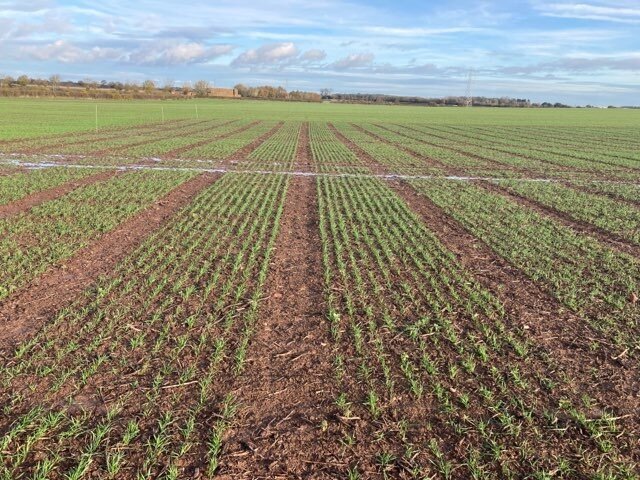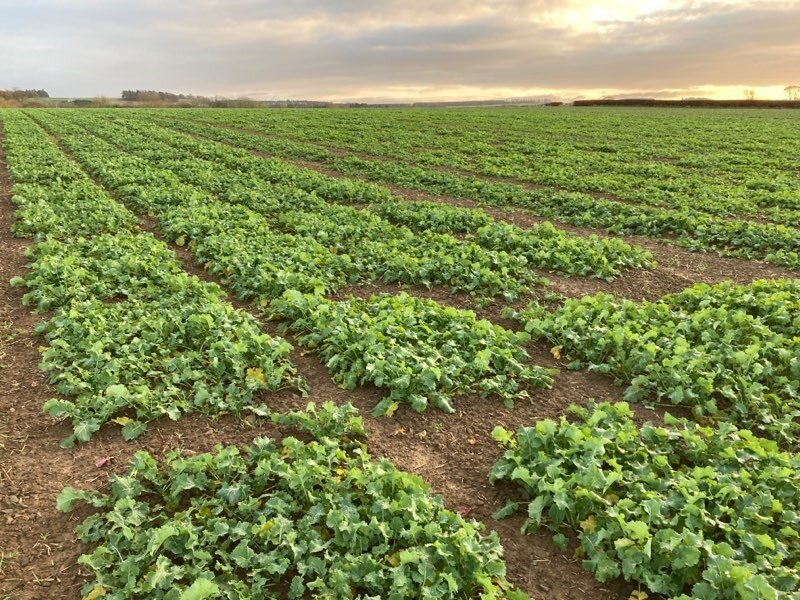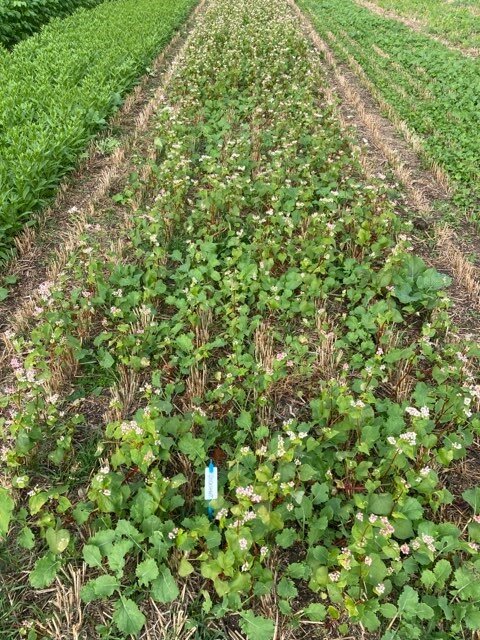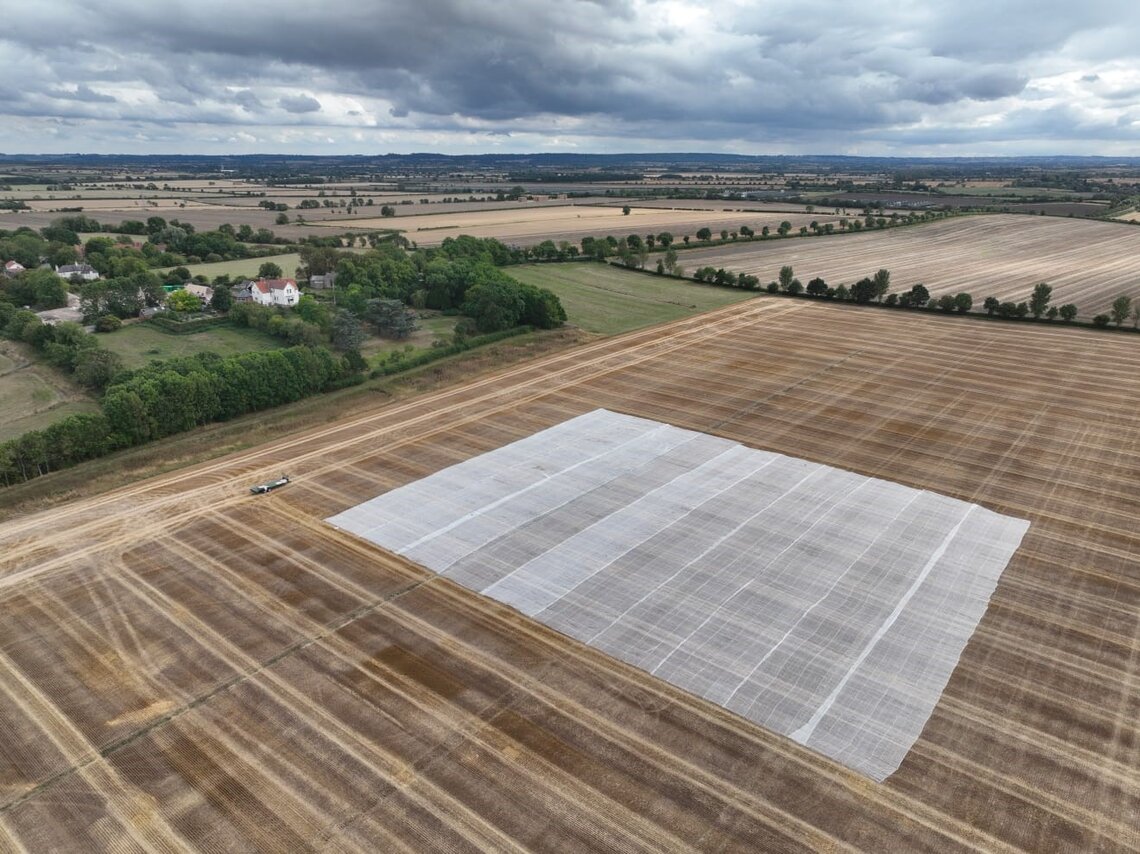The recent cold weather has given the OSR plots at Flawborough a bit of a shock, with GAIs of over 3 before the winter weather the lush growth from the mild autumn is rapidly shrinking back, however with the canopy opening up and cooler temperatures this has allowed the planned autumn herbicides and fungicides to be applied, Phoma has been very visible and above the spray threshold in susceptible varieties and easy to spot in the variety demo row.
The herbicide will also control the different companion crop species in the companion crop trial which have also grown exceptionally well this year and given us some really good observations to take away. It will be interesting to see what level of control we get on the different types and if/how the OSR looks within them and grows form here on in.
Autumn assessments are up to date and help was on hand from one of our plant breeders from Germany to complete the vigour, phoma and development before winter assessments. Not only at Flawbrough, but also several sites in the south of the country where we have breeding material. At the other end of the country I visited our LLS trials in the Scottish borders and up near Cupar, both sites have over 1000 plots and will give some very useful information in the spring.
I can’t mention OSR without mentioning CSFB and although pressure at Flawborough seemed low in the autumn, we have two trials to assess in January one with ADAS and partners and the other with Rapool. So we will find out shortly if observations in the field match larvae numbers in the stem. We did net half the 1000 plots of OSR at Flawbrough as a precaution (see picture).
Still on the subject of CSFB we drilled some experimental OSR varieties on the 13th of October when the risk from flea beetle is low. We are now monitoring speed of growth, winter hardiness and final yield to see if these varieties could give us another option in the battle against flea beetle.
Moving on to cereals, our trials have established well, with them being drilled mid-October, growth has been more than expected and going into winter the plots look good. Septoria can be found at low levels in the wheat and mildew at low levels in the barley. Some varieties have stood out when assessing for establishment and vigour as usual and visibly stand out in the variety demo rows. A time lapse camera has been placed to capture some of these differences. Differences have also been seen in root development in the seed treatment trials and other differences can be seen in seed rate work. Finally, planning and protocols are now underway for trials including NUE, variety blends, fungicide and nutrition work.



